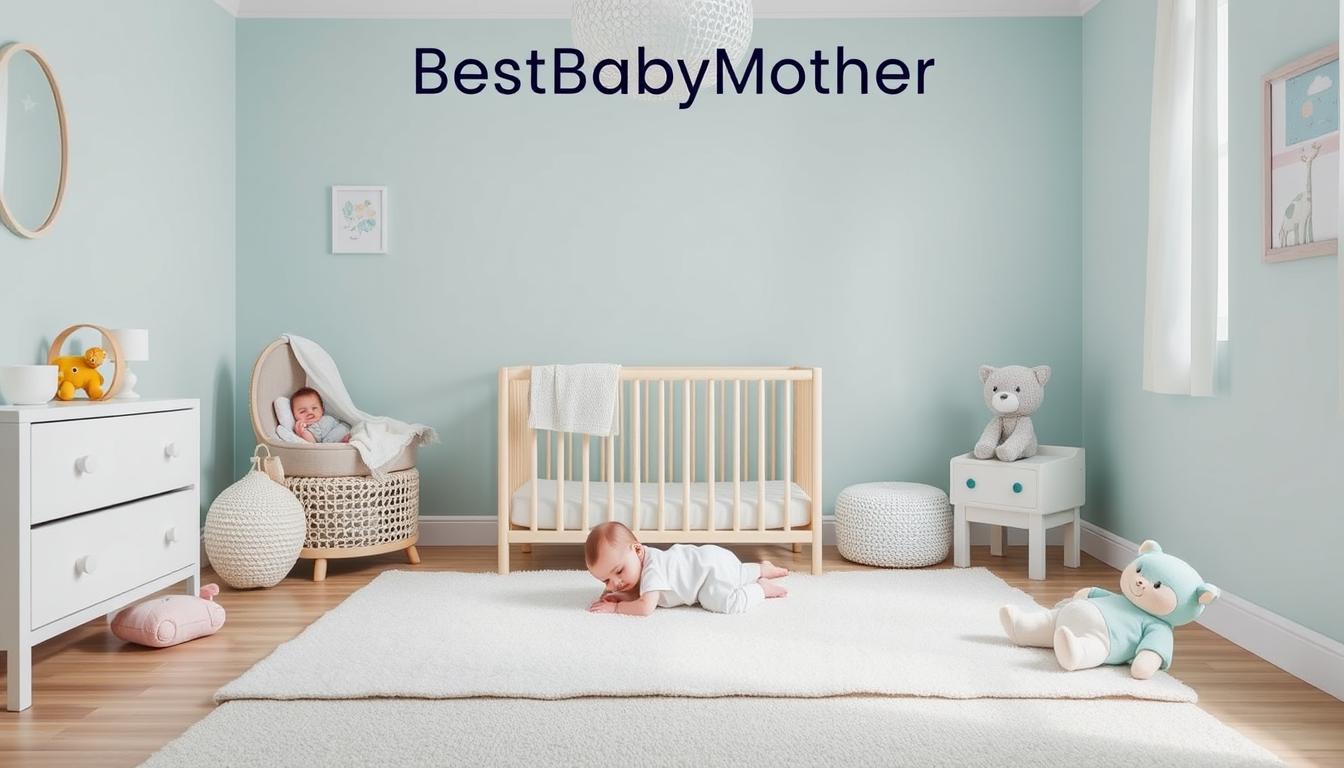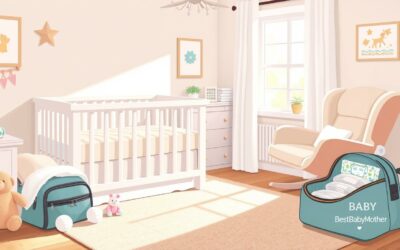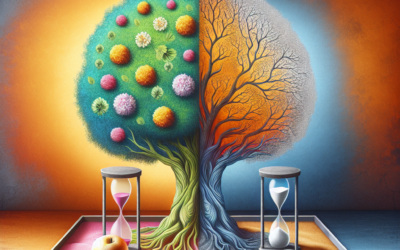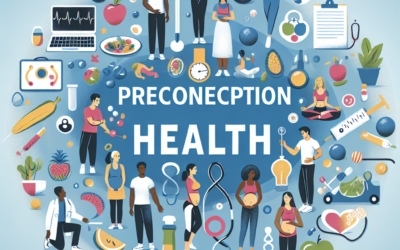Ever wonder how a newborn turns into a toddler in just a year? The journey of growth is amazing. Pediatrician Jennifer Shu, MD, explains the first-year milestones. She says it’s key to watch your baby’s own pace, not just the timeline.
Your baby’s first smile and reflexes are just the start. They’ll soon discover their voice and interact with the world. Each step is unique and special.
Tracking your baby’s growth in the first year is a big job. You’ll need to keep up with doctor visits and safety checks. For more on baby development, check out this guide.
Every baby grows at their own speed. Regular doctor visits are key. They help track your baby’s progress and address any concerns.
Key Takeaways
- Newborn development is a unique journey for each baby, filled with incredible milestones.
- Pediatric insights emphasize progression and individual pace over strict timelines.
- Regular well-baby checkups are essential; typically, six to seven within the first year.
- Developmental milestones include motor skills, language development, and social skills.
- From safety measures to engaging activities, each stage brings new responsibilities for parents.
By understanding and embracing your baby’s growth, you create a supportive environment. Remember, it’s the journey that matters, not just the end goal.
Understanding Newborn Development
Newborn development is a journey full of surprises. Every baby grows at their own pace. It’s important to track their progress, not compare it to others.
Most experts agree: “Don’t compare your baby’s growth to others. Each developmental stage is unique to each baby.”
Newborn screening helps find health issues early. It ensures your baby gets the right care. Babies love human voices from the start. This is why talking and singing to them is so important.
Infant sleep patterns change a lot in the first few months. Sleep cycles usually settle by 3 months. By 4 months, babies sleep for 5 hours straight. But remember, their sleep is unpredictable.
In the first months, many things are still adjusting. Bowel movements and breathing can be unpredictable. Crying is how babies talk. Expect 1 to 3 hours of crying daily in the first three months. Colic usually stops by 4 months.
Feeding is a big part of a baby’s life. Breast-fed babies eat every two hours. Formula-fed babies eat every three hours. Look for 6 to 8 wet diapers a day to know they’re eating well. Sucking on a pacifier or thumb can help between meals.
Always keep your baby safe. Use a car seat in the middle of the back seat. Keep it facing backward until your baby is at least 1 year old and weighs 20 pounds. At home, make sure poisons, hot objects, and unsafe areas are out of reach.
Understanding newborn development means watching your baby’s unique journey. Every small step is important.
Baby Milestones: Month by Month
Knowing your baby’s developmental milestones can make you feel more confident. It helps you care for your newborn better. Every month, babies grow and change in amazing ways. They grow physically, mentally, and emotionally in their first year.
In the first months, babies start to gain weight. They usually weigh more than they did at birth by the first month. They grow about 1 ounce each day after the first two weeks.
At birth, babies are about 20 inches long for boys and a bit shorter for girls. Their heads also grow a lot, almost an inch in the first month.
Early on, newborn care means making sure your baby sleeps a lot. Newborns sleep 14-17 hours a day. They wake up every 2-3 hours to eat. Sleep patterns can vary a lot.
By 2-3 months, some babies sleep longer at night. Others might not. It’s different for every baby.
Babies born in multiples, like twins or triplets, are often smaller. Girls are usually a bit smaller than boys, but the difference is small. Good nutrition during pregnancy helps with infant growth after birth.
Watching your baby’s developmental milestones is important. Look for reflexes like rooting and sucking. Holding your baby close, talking softly, and responding to their cries helps them feel secure.
By six months, babies start to understand words better. They also get to know their world more. By nine months, their personality starts to show, and they might get attached to certain people. They become more active and curious, so parents need to watch them closely.
By their first birthday, babies can walk, laugh, and show love. These are big steps towards becoming toddlers. Also, 80% of a child’s brain grows by age three. This shows how important early development is.
Parents should use milestone checklists for social, emotional, language, and physical growth. The Centers for Disease Control and Prevention (CDC) has a Milestone Tracker app. It helps parents keep track of their baby’s progress and support their growth.
Remember, every baby grows at their own pace. It’s normal for them to be a bit behind or ahead. Catching any delays early helps your baby grow and stay healthy.
First Month: Adapting to the New Environment
In the first month, you learn a lot about caring for your newborn. They sleep a lot, but their awake times grow. Use these times to teach them with smiles, sounds, and touch.
Getting to know newborn reflexes is key. They move their arms in jerky motions and keep their fists tight. They can see things 8 to 14 inches away, making your face a great focus. They also love listening to your voice and other sounds.
Keeping your baby safe is very important. Make sure they are in a car seat and have a safe place to sleep. This means they sleep on their back, on a firm mattress, and without loose things in their crib.
Watching your baby helps you understand what they need. If they seem distracted, it might be because they’re hungry, tired, or too excited. Toys that make sounds and have different textures help them learn.
Play with your baby to help them grow. Use toys that are safe and interesting. Reading and talking to them is great for their brain. Tummy time is also important for their muscles.
Always check how your baby is doing and talk to a doctor if you have any worries. Spending time with your baby and keeping them safe is the best way to help them grow.
| Age | Behavior/Development | Tips |
|---|---|---|
| 0-1 Month | Frequent sleep, recognizing parents’ voices, jerky arm movements, tight fists. | Encourage bonding, use soothing sounds and smiles, ensure a safe sleep environment. |
| 2-3 Months | Increased alertness, focus on objects 8-14 inches away, grasping toys. | Introduce high-contrast toys, practice tummy time, engage through talking and reading. |
Physical Growth and Motor Skills
Physical growth and motor skills are key in a baby’s first year. Your infant will see big changes in how they move. These changes show how your baby is learning to interact with the world.

Gross Motor Skills
Gross motor skills are big movements that use big muscles. At first, you might see reflexes like rooting and sucking. By 2 months, most babies can hold their head up when on their tummy.
By 6 months, almost 80% of babies can roll from their tummy to back. This shows how they are getting better at moving.
| Age (Months) | Physical Milestone | Percentage of Infants |
|---|---|---|
| 2 | Hold head up | 85% |
| 6 | Roll from tummy to back | 70-80% |
| 12 | Pull to stand | 90% |
| 18 | Walk independently | Almost all |
| 24 | Kicks a ball | Most |
By the end of the first year, 90% of babies can pull themselves up. Many start to move along furniture. By 24 months, most can run and kick a ball.
Fine Motor Skills
Fine motor skills are small movements that use tiny muscles. These skills help your baby grasp and manipulate things. By 4 months, over 90% of babies can hold their head steady and hold a toy.
As your baby gets to 12 months, they will show more skill. Over 80% of babies can pick up small items with their thumb and forefinger.
| Age (Months) | Physical Milestone | Percentage of Infants |
|---|---|---|
| 2 | Briefly relax hands from fists | 100% |
| 4 | Hold head steady without support | 90% |
| 9 | Move items from one hand to another | 70% |
| 12 | Use thumb and finger “pincer grasp” | 80% |
| 15 | Take a few steps independently | 60% |
By 24 months, your child’s fine motor skills get even better. 80% of toddlers can eat with a spoon. By 30 months, they can twist and unscrew things. Watching these milestones shows how your child is growing.
Cognitive and Language Development
Cognitive development in infants is amazing. It’s closely tied to language development. In the first year, your baby will hit many cognitive milestones. They’ll start recognizing faces and sounds, babble, and imitate sounds. This is the start of more complex language skills. Let’s explore how these baby milestones happen.
Babbling and Imitation
Babbling is key for language development. Around 4 to 6 months, babies start making sounds like “ba-ba” or “da-da.” This is important for learning to form words. Studies show babies can pick up sounds from different languages.
Behavioral theories say caregivers help by giving positive feedback and imitating. This helps babies get better at making sounds.
Recognizing Faces and Sounds
Recognizing faces and sounds is a big cognitive milestone. By 7 months, babies can tell who they know. This is key for social skills and bonding with caregivers.
Infants also start to know their name and sounds of objects or people. Naming things helps them understand the world better. This boosts both their thinking and language skills.
| Key Milestone | Typical Age | Significance |
|---|---|---|
| Babbling | 4-6 months | Foundation for language development |
| Imitation of sounds | 6-9 months | Helps refine language skills |
| Recognition of faces | 7 months | Critical for social bonding |
| Sound recognition | 7-12 months | Assists in cognitive categorization |
Your baby’s journey through these cognitive milestones and language development stages is fascinating. Knowing and supporting these baby milestones can create a rich, nurturing space for your little one.
Social and Emotional Milestones
It’s important to know the social and emotional milestones in your baby’s growth. This helps in bonding and ensures they develop well socially. Babies show joy and start forming emotional bonds early. You can see this in how they react and interact.

Responding to Smiles
By 1 to 2 months, babies start smiling back at their caregivers. These smiles are key for bonding and show they’re starting to connect socially. Around 3 months, they get better at using facial expressions and body language to talk.
Interactive Play
Interactive play is crucial for your baby’s social growth. By 4 months, they get excited about other kids, especially siblings. They love games like peekaboo.
By 8 months, they can focus on the same thing as others. By 12 months, they start pointing to ask for things. By 16 months, they point to share or show interest.
To keep up with your baby’s growth, check out here.
Watching these milestones helps you support your baby’s emotional and social growth. It creates a caring space for them to grow.
| Age Range | Social and Emotional Milestones |
|---|---|
| 0-2 Months | Searches for comfort, forms bonds, learns to trust caregivers |
| 4-6 Months | Notices surroundings, desires to be part of the action |
| 7-9 Months | Exhibits stranger anxiety, curiosity about new situations |
| 9-12 Months | Recognizes words, forms strong bonds, expresses preferences |
Rolling Over: A Major Physical Milestone
Rolling over is a big step in your baby’s growth. It shows they are learning physical milestones and gross motor skills. Babies usually roll from front to back by 4 months. By 5 months, they can roll both ways, which is key for infant growth.
Rolling over is a big move for babies. It helps them get stronger, better at moving, and balanced. This skill is important for sitting, crawling, and walking later on. It also helps their senses grow.
Parents can help by doing tummy time with their baby. The American Academy of Pediatrics says to do it two to three times a day. Start when they are new, for short times of three to five minutes. This helps their muscles grow, like the neck and arms.
Every baby is different, but most start showing they can roll by 5 months. They might lift their chest or twist their legs. By 7 months, most can roll in both directions. If your baby hasn’t rolled by 5 months, talk to a physical therapist.
Rolling over is a big step towards more skills. It’s key for their gross motor skills development. Here are some milestones for rolling over:
| Age (Months) | Milestone |
|---|---|
| 4 | Begins to roll from front to back |
| 5 | Perfects rolling both ways |
| 5+ | Shows signs of readiness to roll |
| 7 | Rolls over in both directions |
Always watch your baby during tummy time to keep them safe. Helping them with these early steps is good for their growth. If you worry about your baby’s growth, talk to your doctor.
Sitting Up and Head Control
Infants learn to sit up and control their heads in their first year. This skill takes about six months to master. It helps them get stronger and ready for crawling, standing, and walking.
Supporting Their Weight
By four months, babies can hold their heads up while sitting. This shows they’re getting better at head control. Parents help by giving tummy time, which makes neck muscles stronger.
At first, babies use their hands to hold their heads. But by three to four months, they can hold their heads steady when sitting.
Mastering Balance
By six months, babies can sit up on their own. They also get better at moving their heads and hands. Looking around and playing while sitting helps them balance.
By this time, babies should be able to sit up with little help. But, if they’re not, see a doctor. Premature babies or those with delays might need more time.
FAQ
What are some key milestones in newborn development during the first year?
Newborns start smiling and tracking objects early. They discover their limbs and voice too. By the time they are a few months old, they can roll over and sit up.
They start crawling and walking later. In terms of talking, they babble and say simple words. They also get better at recognizing names and playing with others.
How can I understand the development stages of my newborn?
Watch how your baby grows in different areas. This includes motor skills, thinking, talking, and social skills. Every baby grows at their own pace. So, focus on their progress, not just milestones.
What can I expect in terms of month-by-month baby milestones?
Your baby will hit many milestones each month. They’ll smile, track objects, and roll over. They’ll also start babbling and sitting up.
As they grow, their motor and thinking skills will improve. They’ll also get better at talking and playing with others.
What typical behaviors should I look for in my baby’s first month?
In the first month, babies move their arms in jerky movements. They keep their hands in fists and focus on close objects. They also get very sensitive to sounds, especially their parents’ voices.
It’s very important to keep them safe during this time.
How does my baby develop gross motor skills?
Gross motor skills grow as your baby goes from head-raising to rolling over. They then sit up and crawl. Each step builds strength and coordination.
This foundation is key for walking and more complex movements.
What are fine motor skills, and when do they develop?
Fine motor skills are about hand-eye coordination. This includes reaching, grasping, and using the pincer grasp. These skills take time to develop as your baby learns to control their hands and fingers.
What cognitive and language milestones should my baby reach?
Cognitive and language milestones include babbling and imitating sounds. They also recognize familiar faces and voices. By the end of the first year, they might say simple words.
Babies start to understand and respond to speech and facial expressions too.
How does social interaction evolve in my baby?
Social interaction starts early with smiling and interactive play. By the seventh month, babies show joy or displeasure through sounds. They also react to familiar faces and emotional expressions.
When can I expect my baby to start rolling over?
Rolling over usually happens between four and six months. This is the start of more advanced skills like crawling and walking.
How do babies develop the ability to sit up and control their head?
Babies learn to sit up and control their head by supporting their weight and balancing. This skill is important for future movements and independence.













